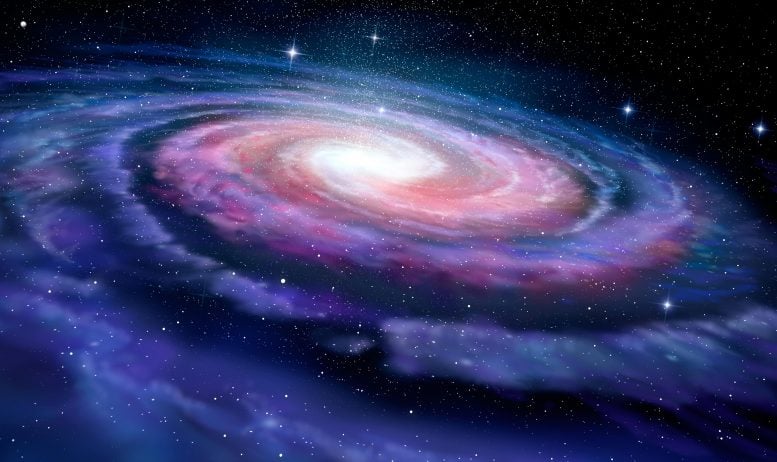Using data from the Gaia satellite telescope, a team headed by Lund University researchers in Sweden discovered that large parts of the Milky Way’s outer disk vibrate. The ripples are caused by a dwarf galaxy that passed by our galaxy hundreds of millions of years ago and is now visible in the constellation Sagittarius.
The Milky Way, our cosmic home, contains between 100 and 400 billion stars. The galaxy is thought to have formed 13.6 billion years ago, originating from a rotating cloud of gas composed of hydrogen and helium. The gas then accumulated over billions of years in a rotating disk, where stars like our sun were created.
The research team presents their findings on the stars in the outer regions of the galactic disk in a new study that was recently published in the journal Monthly Notices of the Royal Astronomical Society.
The data revealed that a mysterious ripple was causing stars all around the galaxy to oscillate at different speeds.
“We can see that these stars wobble and move up and down at different speeds. When the dwarf galaxy Sagittarius passed the Milky Way, it created wave motions in our galaxy, a little bit like when a stone is dropped into a pond”, Paul McMillan, the astronomy researcher at Lund Observatory who led the study, explains.
The research team was able to explore a far larger area of the Milky Way’s disk than was previously possible thanks to data from the European space telescope Gaia. The researchers have begun to put together a complicated puzzle by measuring the strength of the ripples in different parts of the disc, providing clues about Sagittarius’ history and orbit around our home galaxy.
“At the moment, Sagittarius is slowly being torn apart, but 1-2 billion years ago it was significantly larger, probably around 20 percent of the mass of the Milky Way’s disk,” says Paul McMillan.
The researchers were surprised by how much of the Milky Way they could study using the data from Gaia. To date, the telescope, which has been in operation since 2013, has measured the movement across the sky of approximately two billion stars and the movement towards or away from us of 33 million.
“With this new discovery, we can study the Milky Way in the same way that geologists draw conclusions about the structure of the Earth from the seismic waves that travel through it. This type of “galactic seismology” will teach us a lot about our home galaxy and its evolution,” Paul McMillan concludes.
- Karlston
-

 1
1




Recommended Comments
There are no comments to display.
Join the conversation
You can post now and register later. If you have an account, sign in now to post with your account.
Note: Your post will require moderator approval before it will be visible.